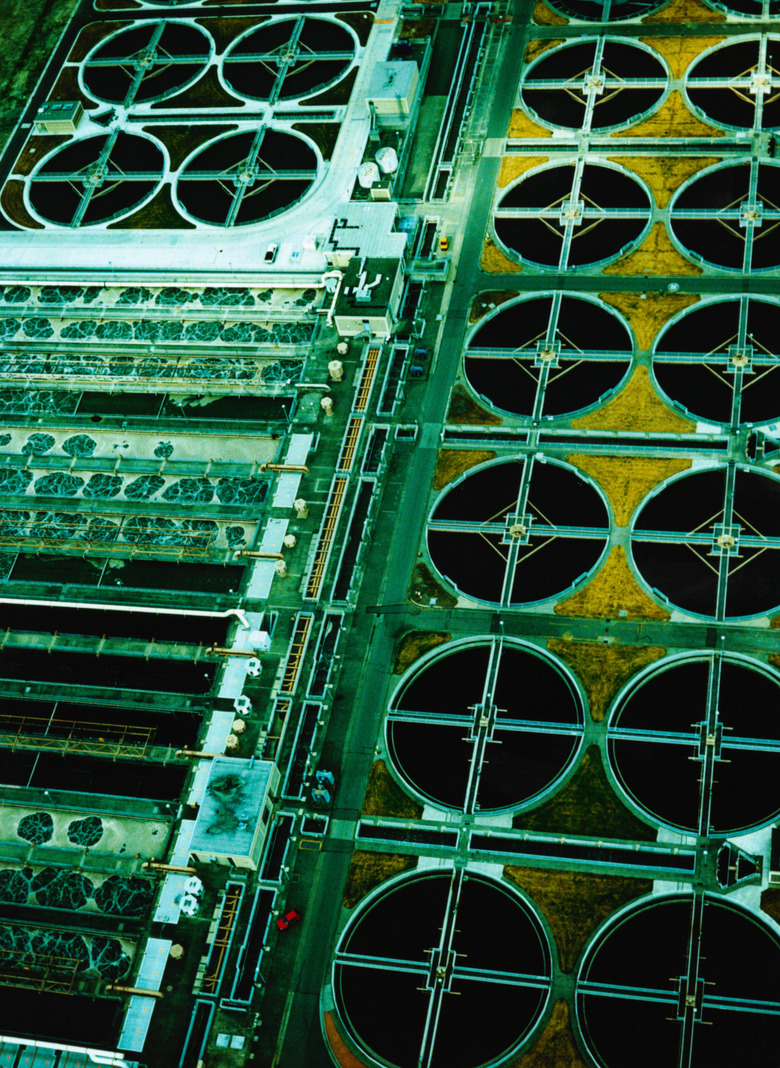Ozone Water Treatment Disadvantages
Often wastewater and sewage contain a bewildering array of germs and carbon-based or organic chemicals and pollutants. Removing germs and organic compounds is a critical part of wastewater treatment, and ozone is one of the chemicals often employed to do the job. While it's more effective than chlorine at destroying germs, it does have some important disadvantages.
Solubility and Activity
Solubility and Activity
If the dose of ozone is too low, some of the germs and especially those that can form cysts may survive. Consequently, higher ozone concentrations are beneficial. These are difficult to maintain, however, because ozone is 12 times less soluble in water than chlorine, so the maximum disinfectant concentrations you can reach are much lower when you use ozone. Moreover, ozone breaks down very rapidly, and the higher the temperature or the pH, the more rapidly it decays. If the water is rich in organic compounds or suspended solids, a lot of the ozone may be consumed through reactions with these other contaminants, leaving an insufficient amount available to destroy germs. That's why ozone is not an economical option for wastewater with very high amounts of suspended solids or total organic compounds.
Reactivity
Reactivity
Ozone's reactivity is what makes it such a great disinfectant. That same strength, however, comes with some accompanying disadvantages. Ozone can react with many metals, including those used to line wastewater treatment containers, so operators must use corrosion-resistant materials like stainless steel, which makes plant construction more expensive. Moreover, ozone's reactivity makes it a toxic chemical, so operators must design plants in such a way that workers don't come into contact with ozone gas escaping from the water. This too increases the expense of ozone wastewater treatment.
Expense
Expense
Ozone is more challenging to produce and deliver than chlorine. Typically, plant operators generate ozone by running an electric current through air passing between two electrodes, a technique called corona discharge. About 85 percent of the energy input to a corona discharge system is wasted in the form of heat. This method is extremely energy-intensive and the equipment required is more complicated than chlorination systems, meaning that ozone generation is typically more expensive than the alternatives.
Residuals and Byproducts
Residuals and Byproducts
When ozone reacts with organic compounds, it creates a variety of byproducts. If the water contains bromide ions, ozone treatment can form brominated compounds like the bromate ion, which is a possible human carcinogen. Consequently, operators must either control the pH or avoid use of ozone if the water is rich in bromide salts. Finally, ozone is unlike chlorine in that there is no residual or remaining disinfectant once the process is over; any ozone that doesn't react with contaminants breaks down completely. This makes it more difficult for plant operators to keep tabs on how well disinfection is working since there is no residual level of ozone in the water that they can monitor.
References
Cite This Article
MLA
Brennan, John. "Ozone Water Treatment Disadvantages" sciencing.com, https://www.sciencing.com/ozone-water-treatment-disadvantages-22555/. 24 April 2017.
APA
Brennan, John. (2017, April 24). Ozone Water Treatment Disadvantages. sciencing.com. Retrieved from https://www.sciencing.com/ozone-water-treatment-disadvantages-22555/
Chicago
Brennan, John. Ozone Water Treatment Disadvantages last modified August 30, 2022. https://www.sciencing.com/ozone-water-treatment-disadvantages-22555/
